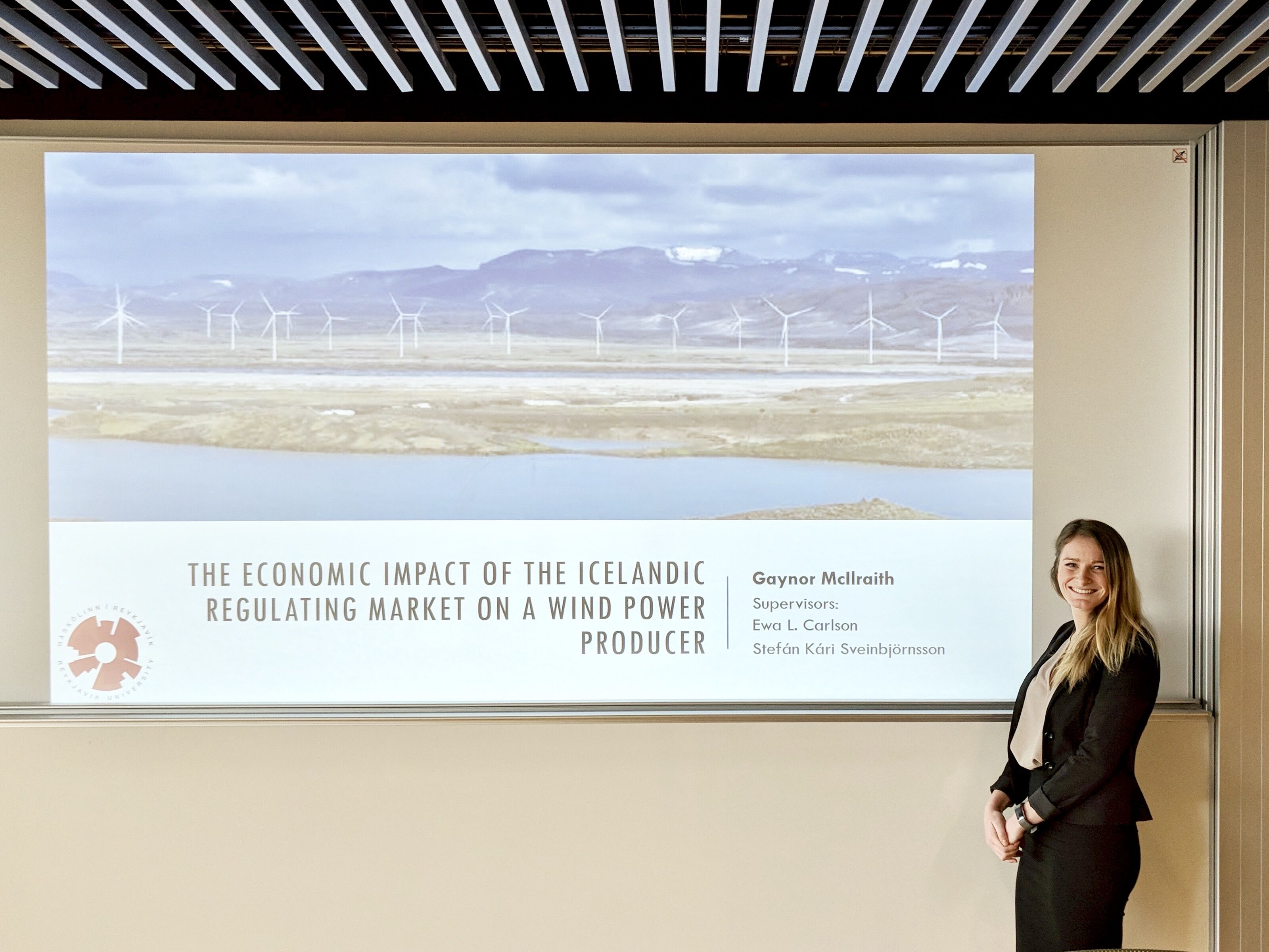MSc Thesis: The Economic Feasibility of a Wind Power Producer Operating in the Icelandic Regulating Market
Gaynor Kirsten McIlraith successfully defends her master’s thesis
REYKJAVIK, June 4 - Last month, Gaynor McIlraith, MSc in Sustainable Energy Science successfully defended her master’s thesis project, in which she assessed the economic feasibility of a wind power producer operating in the Icelandic regulating market. Gaynor’s work was supervised by Ewa Lazarczyk Carlson from Reykjavik University and Stefán Kári Sveinbjörnsson from Landsvirkjun, the national power company of Iceland.

Her project was inspired by the rapid growth of a plethora of renewable energy technology in the past decade, which resulted in substantial installed wind power capacities around the world. The integration of wind production into electricity markets, however, has been met with significant challenges. Due to the volatile nature of wind and hence, the resulting fluctuations in power output, wind farms face a growing responsibility to reduce these variances.
Gaynor’s thesis addressed the question on how a wind farm can exist as a balancing responsible party in Iceland. To answer this question, she analysed the economic viability of three scenarios. In the first scenario, in which a stand-alone wind farm exists, there is no balancing strategy applied. In the second scenario, in which there is a wind farm with external balancing from hydropower plant, 5%, 10%, 15% and 20% balancing capacities are further assessed. In the third and final scenario, in which a wind farm exhibits internal balancing, 90% scheduled capacity with 10% balancing capacity and 70% scheduled capacity with 30% balancing capacity are analysed.
To do this, Gaynor obtained the forecasted and observed hourly wind speed and directional dataset from the Icelandic MET office for the vicinity of the Blanda Hydropower site in Northwestern Iceland. She then applied a wind shear coefficient onto it to raise the elevation to an assumed 50 m elevation and and applied it to a park power curve. The difference between the actual and scheduled power were then calculated and applied to balancing energy price to model cost effects. Gaynor further explained the volatility of the data predictions. Volatility of results are caused by several factors, such as wind shear. When the wind speed is low, there are lower errors in forecasting as the results tend to be low.
According to Gaynor’s study, under the current Icelandic market conditions, it is very expensive for a wind farm to operate as a balancing power without applying a balancing strategy and reducing the negative residual errors. Her evaluations of the three scenarios show that the most favourable outcome was the result of external balancing with hydropower, or the second scenario, as the costs were halved after applying 5% and possible net profits were even achieved after applying 10%. Ultimately, Gaynor emphasised that developing an accurate prediction model for a wind farm is essential to a successful performance. To read more about Gaynor’s wok, click on the following link .
Congratulations, Gaynor on an excellent thesis!
